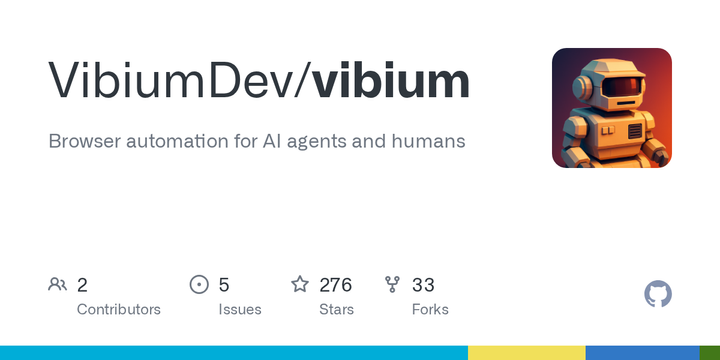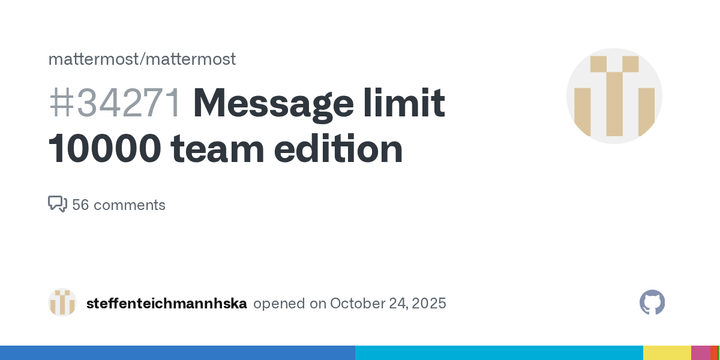Tell HN: Merry Christmas
Different cultures celebrate Christmas at different days and time zones are a thing. But it's Christmas here, so:
Merry Christmas to everyone. I hope you get some rest and can spend time with people who are dear to you and get to focus on what's important rather than getting lost in stressing about everything having to be perfect.
Also much love to everyone who cannot spend their Christmas with dear people.
To make sure this post meets the relevancy criteria, here is a Wikipedia article about some Christmas (more precisely advent) tradition which I personally really like: https://en.wikipedia.org/wiki/Christmas_market
We invited a man into our home at Christmas and he stayed with us for 45 years
The article discusses the growing trend of companies offering employees 'unlimited' vacation time, highlighting both the potential benefits and concerns surrounding this policy, such as employee burnout and the need for proper implementation.
Ruby 4.0.0
Ruby 4.0.0 has been released, featuring improvements in performance, security, and language features. The update includes changes to exception handling, AST, and other core functionality, aiming to enhance the programming experience for Ruby developers.
Nvidia to buy assets from Groq for $20B cash
https://groq.com/newsroom/groq-and-nvidia-enter-non-exclusiv...
Phoenix: A modern X server written from scratch in Zig

Show HN: Minimalist editor that lives in browser, stores everything in the URL
I wanted to see how far I could go building a notes app using only what modern browsers already provide – no frameworks, no storage APIs, no build step.
What it does:
Single HTML file, no deps, 111 loc
Notes live in the URL hash (shareable links!)
Auto-compressed with CompressionStream
Plain-text editor (contenteditable)
History support
Page title from first # heading
Respects light/dark mode
No storage, cookies, or tracking
The entire app is the page source.
https://textarea.my/

Alzheimer’s disease can be reversed in animal models? Study
A new study shows that Alzheimer's disease can be reversed and full neurological recovery can be achieved, not just prevented or slowed, in animal models. This finding offers hope for developing effective treatments for the devastating neurodegenerative condition.

Show HN: Vibium – Browser automation for AI and humans, by Selenium's creator
i started the selenium project 21 years ago. vibium is what i'd build if i started over today with ai agents in mind. go binary under the hood (handles browser, bidi, mcp) but devs never see it. just npm install vibium. python/java coming. for claude code: claude mcp add vibium -- npx -y vibium v1 ships today. ama.

I sell onions on the Internet (2019)
This article tells the story of a man who started an online business selling onions, overcoming challenges to build a successful e-commerce venture. It explores his entrepreneurial journey, the strategies he used to stand out in a crowded market, and the lessons he learned along the way.

Maybe the default settings are too high
The article explores the idea that many of the default settings in life, such as work hours, material possessions, and social obligations, may be set too high, leading to unnecessary stress and dissatisfaction. It suggests that individuals should re-examine these default settings and make adjustments to better align with their personal values and wellbeing.
Fabrice Bellard: Biography (2009) [pdf]

Mattermost restricted access to old messages after 10000 limit is reached
The article discusses a bug in the Mattermost application that causes excessive CPU usage. The bug is related to a specific user activity, and the article outlines a potential solution to mitigate the issue.
Python 3.15’s interpreter for Windows x86-64 should hopefully be 15% faster
The article discusses the author's personal journey of moving past feelings of regret and embracing self-acceptance. It explores the challenges of overcoming past mistakes and the importance of learning from them to move forward in a positive and empowered way.
I'm returning my Framework 16
The article discusses the author's decision to abandon a web framework they had been developing for 16 years, citing the increasing complexity and maintenance burden as the primary reasons for their choice. The author emphasizes the importance of recognizing when a project has run its course and the value of being honest with oneself and the community about such decisions.
Who Watches the Waymos? I do [video]
https://x.com/fulligin/status/2003925653113184498
https://xcancel.com/fulligin/status/2003925653113184498

Microsoft please get your tab to autocomplete shit together
The article criticizes Microsoft's tab behavior in its Visual Studio Code editor, which does not automatically complete when typing. The author argues that this feature should be improved to enhance the user experience and productivity for programmers.
When compilers surprise you
The article discusses 24 clever and inventive uses of the C programming language's Clang compiler, ranging from optimizing code to creating unique software applications. It highlights the versatility and power of Clang as a development tool beyond its primary function as a compiler.

Google's year in review: areas with research breakthroughs in 2025
Google's AI research roadmap for 2025 highlights breakthroughs in language models, computer vision, robotics, and healthcare AI, aiming to advance AI capabilities and address societal challenges through responsible development and deployment of these technologies.
Free Software Foundation receives historic private donations
The Free Software Foundation (FSF) has received a historic series of private donations, totaling millions of dollars, to support its work in promoting free and open-source software. The donations will help the FSF continue its advocacy, development, and community-building efforts around free software.

Asahi Linux with Sway on the MacBook Air M2 (2024)
The article describes the author's experience installing Asahi Linux, a Linux distribution optimized for Apple M-series chips, on a MacBook Air M2. It focuses on the installation process and the use of the Sway window manager, highlighting the challenges and successes encountered during the setup.

How I Left YouTube
The article details the author's decision to leave their successful YouTube channel, citing a desire for more creative freedom, control over their content, and a healthier work-life balance outside the demands of the platform.

Asterisk AI Voice Agent
The article describes the development of an AI-powered voice agent using the Asterisk open-source VoIP platform. It discusses the integration of natural language processing and text-to-speech technologies to create an intelligent virtual assistant capable of engaging in conversational interactions.

Why We Abandoned Matrix (2024)
The article discusses the reasons why the author's team abandoned the Matrix messaging platform, citing concerns over user security and safety, including issues related to server infrastructure, data privacy, and the overall stability and reliability of the platform.

AMD entered the CPU market with reverse-engineered Intel 8080 clone 50 years ago
The article discusses how AMD first entered the CPU market 50 years ago by reverse-engineering an Intel 8080 clone, the AM9080, which cost 50 cents to make but sold for $700, highlighting AMD's early beginnings in the semiconductor industry.

The e-scooter isn't new – London was zooming around on Autopeds a century ago
Related: https://horizonmicromobility.com/blogs/micromobility-blog/hi...

Salesforce regrets firing 4000 experienced staff and replacing them with AI
Salesforce, a major cloud computing company, expresses regret over its decision to lay off 4,000 employees, citing the impact of artificial intelligence (AI) on its business operations and the need to adapt its workforce to the changing technological landscape.

Games’ affordance of childlike wonder and reduced burnout risk in young adults
The article explores the use of augmented reality (AR) in video games and its potential impact on player engagement, social interaction, and physical activity. It discusses the design considerations and challenges involved in developing successful AR gaming experiences.
Fahrplan – 39C3

Google is 'gradually rolling out' option to change your gmail.com address
Google is planning to change Gmail addresses to a new format that will include users' names, making them more personalized and easier to remember. The change aims to provide users with a more recognizable and customized email experience.
Avoid Mini-Frameworks
The article discusses the drawbacks of using mini-frameworks, highlighting their tendency to increase complexity, reduce performance, and make it difficult to maintain and scale applications. It argues that developers should carefully consider whether a mini-framework is necessary and instead focus on building applications using well-established, full-featured frameworks or by writing custom code.